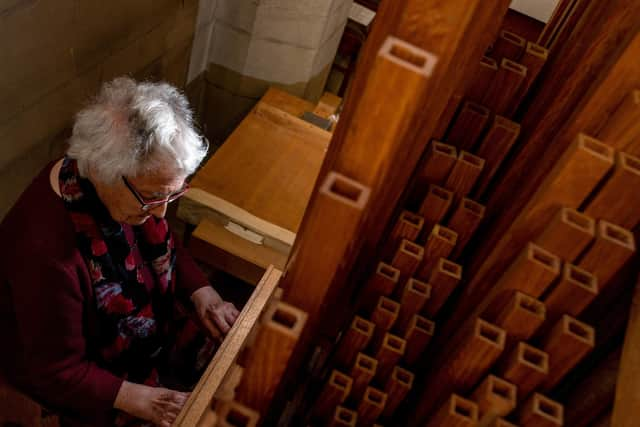Rebuilt Tudor organ to be played in Yorkshire for the first time in almost 500 years
A church organ from the 1540s has been faithfully recreated by musical experts using a fragment that survived from the time of Henry VIII.
Now the Wingfield Organ as it is known is on a tour of UK churches and is at Bradford Cathedral for the foreseeable future, where it is delighting music enthusiasts.
Advertisement
Hide AdAdvertisement
Hide AdAlexander Berry, the cathedral’s director of music, said: “It is a tremendous piece of equipment. A lot of people have been enchanted by it. It sounds distinctively different to modern organs and it is a pleasure to hear it.”


The new organ is based on a soundboard found at Wingfield church in Suffolk. The fragment cannot be dated. But the style of the piece means experts assume it was built in the 1530s or 1540s.
It is known that there were continental organbuilders being paid for new parish church organs in the first half of the 16th century in England, but the indigenous characteristics of this organ suggest that it was made by an English builder.
It was recreated by a company called Goetze and Gwynn which followed historical techniques. This relatively small organ is a reconstruction of the kind of instrument that was made for British churches around 500 years ago. It has one keyboard and a small number of pipes.
Advertisement
Hide AdAdvertisement
Hide AdThe Wingfield Organ and a second larger one based on remains found at Wetheringsett in Suffolk are the result of an Early English Organ Project which is an attempt to fill an important gap in our musical history.
No British organs from the 16th century survive complete. Some were destroyed in the Reformation or at the time of the Civil War. Many others fell into disrepair. They were dismantled and sold for scrap.
The Wingfield Organ was built for use in a Lady Chapel or a choir and would have complemented a larger organ.
That is why the Wetheringsett organ was built, which gives a broader coverage of the Tudor repertoire.
Advertisement
Hide AdAdvertisement
Hide AdIn Tudor times there was a wide range of sizes of church organs, some so small they could be carried and others vast enough to operate in cathedrals.
The soundboard is a crucial part of the organ. On it stands the pipes. To it are connected the keys which enable the player to make the pipes sound.
From the soundboard experts can deduct the size, range and pitch of the organ. The soundboard had suffered from woodworm and rot but enough survived to allow the organ to be recreated.
In recreating the Wingfield, experts used detective work to examine 17th century organs, action and bellows from organs around the world, surviving organ music and documents.
Enthusiasts who would like to hear the Wingfield organ, or possibly play it, can contact the Bradford Cathedral office on (01274) 777720.